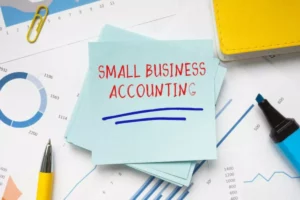Content
If you haven’t configured your email settings yet, you’ll be given a temporary password that you’ll have to share with that person. If you want to delete an account because the account information was set up incorrectly, you can deactivate the old account and create a new one instead. If you’ve already configured Metabase to use email, Metabase will send the person an email inviting them to log into Metabase. If you haven’t yet setup email for your Metabase, Metabase will give you a temporary password that you’ll have to manually send to the person. You can’t mass-register Twitter accounts or use automation to create Twitter accounts. We want Twitter to be a place where people can make human connections, find reliable information, and express themselves freely and safely.

Read on to learn the difference between temporary vs. permanent accounts, examples of each, and how they impact your small business. Below is a basic example of a debit and credit journal entry within a general ledger. Current Assets is an account where assets that can be converted into cash within one fiscal year or operating cycle are entered.
What is the Drawings Account?
Completing the challenge below proves you are a human and gives you temporary access. Whether you’re just starting your business or you’re already well on your way, keeping organized financial records is a must. Download our FREE whitepaper, How to Set up Your Accounting Books for the First Time, for the scoop.
Usually, real accounts are listed in the balance sheet of the business. For this reason, they are sometimes referred to as balance sheet accounts. The first three classifications are referred to as balance sheet accounts since the balances in these accounts are reported on the financial statement known as the balance sheet. All assets, liabilities and owner’s capital accounts are closed at the end of the period. Temporary accounts are those accounts whose balances are closed or zeroed at the end of each accounting period.
Multiple accounts and coordination
All such information is provided solely for convenience purposes only and all users thereof should be guided accordingly. Examples of such accounts include an individual’s accounts (e.g., Mr. X’s account), the accounts held by modern enterprises, and city bank accounts. Answer the following questions on closing entries and rate your confidence to check your answer.
What are 5 temporary capital accounts?
Temporary accounts include revenue accounts, expenses accounts, gain or loss on capital transactions accounts, memorandum accounts & any drawing account. Generally, these accounts are used to prepare the business's Income statement.
This allows organizations to identify errors, mistakes and pitfalls which can be remedied quickly and prevent larger issues in the future. Of the many types of Current Assets accounts, three are Cash and Cash Equivalents, Marketable Securities, and Prepaid Expenses. Many companies categorize liquid investments into the Marketable Securities account, but some can be accounted for in the Other Short-Term Investments account. An example would be excess funds invested in a short-term security, putting the funds to work but keeping the option of accessing them if needed. If an account is never collected, it is entered as a bad debt expense and not included in the Current Assets account. We follow strict ethical journalism practices, which includes presenting unbiased information and citing reliable, attributed resources.
Closing Entries
For example, Apple, Inc. lists several sub-accountss under Current Assets that combine to make up total current assets, which is the value of all Current Assets sub-accounts. A temporary account is an account that is closed at the end of every accounting period and starts a new period with a zero balance. The accounts are closed to prevent their balances from being mixed with the balances of the next accounting period. The objective is to show the profits that were generated and the accounting activity of individual periods.
Which of the following categories of accounts are temporary accounts that are closed?
Temporary accounts include revenue, expenses, and dividends, and these accounts must be closed at the end of the accounting year.
Ask a question about your financial situation providing as much detail as possible. Our mission is to empower readers with the most factual and reliable financial information possible to help them make informed decisions for their individual needs. Our task is to classify these accounts using both the traditional and modern approaches. The main types of accounts used under this approach are mostly self-explanatory. The modern approach has become a standard for classifying accounts in many developed countries. Harold Averkamp (CPA, MBA) has worked as a university accounting instructor, accountant, and consultant for more than 25 years.
A PRIN FIN ACCOUNTING (ACCT-2301- > Exam #2 review (Ch 4, 6, > Flashcards
Either way, you must make sure your temporary accounts track funds over the same period of time. Property, plants, buildings, facilities, equipment, and other illiquid investments are all examples of non-current assets because they can take a significant amount of time to sell. Non-current assets are also valued at their purchase price because https://www.bookstime.com/articles/temporary-accounts they are held for longer times and depreciate. Current assets are valued at fair market value and don’t depreciate. This section is important for investors because it shows the company’s short-term liquidity. According to Apple’s balance sheet, it had $135 million in the Current Assets account it could convert to cash within one year.
Current assets are any asset a company can convert to cash within a short time, usually one year. These assets are listed in the Current Assets account on a publicly traded company’s balance sheet. Classification of accounts in the ledgers is needed to create the Financial Statements. If the sale and purchase of assets have been properly recorded, that makes it easier to see asset classifications you need to report on the balance sheet. Examples of nominal accounts include sales, purchases, gains on asset sales, wages paid, and rent paid.
